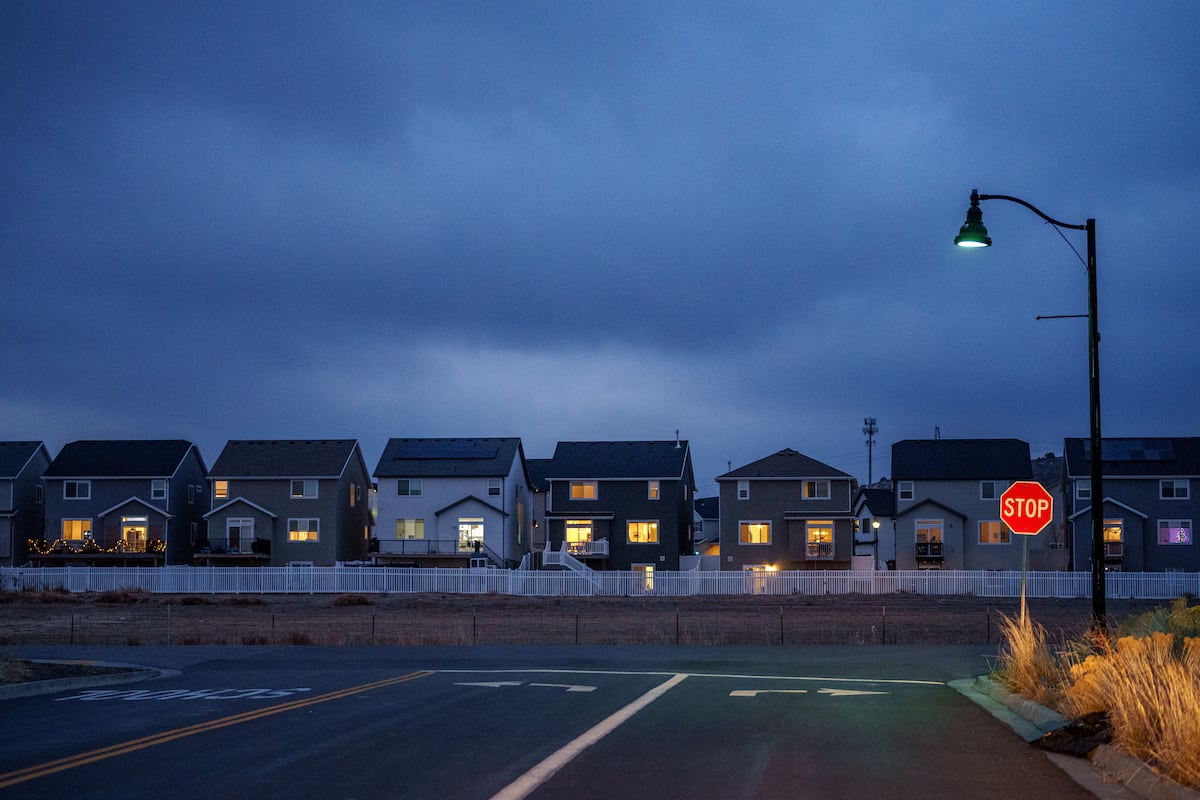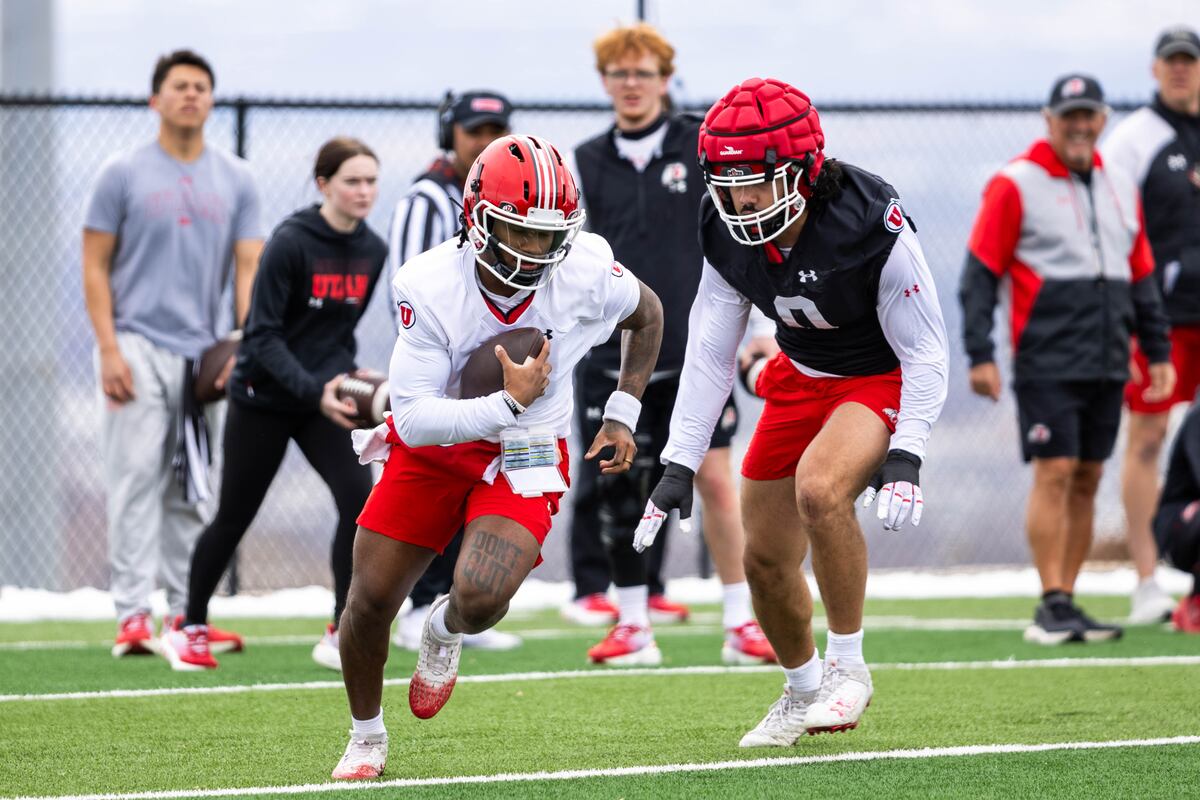In totality, I think we’ll make some good progress,” said a Utah senator who sponsored several housing bills this year.

A package of bills that one state senator described as “a hodgepodge of different tweaks to policy” made it through Utah’s Legislature with hours to spare.
All this year’s changes to housing policy, from parking rules to density allowances and short-term rental enforcement, move the state in the right direction as it seeks to address a deep lack of supply that’s led to inflated housing prices, said Sen. Lincoln Fillmore, R-South Jordan.
Fillmore and Rep. Stephen Whyte, R-Mapleton co-chair the Commission on Housing Affordability and sponsored most of the bills geared at making it easier to build homes in Utah. Many of those bills were proposals from the commission, which brings together developers, local government officials and others with stake in the housing space to reach a consensus on policy changes.
“In totality, I think we’ll make some good progress,” said Fillmore, a member of Senate leadership, during a media availability in the final days of the session. “There is demand for housing at the first rung of the economic ladder, and the government is constraining supply there.”
Lawmakers need to keep working to “lessen government interference in that market so that demand can increase to reach supply,” he said.
Democrats are “just happy to see any type of movement,” said Senate Minority Leader Luz Escamilla, D-Salt Lake City, even though they’d like to see more.
Laurie Goodman, a fellow with policy think tank Urban Institute’s housing finance policy center, said it sounds like lawmakers are trying to address the “one thing after another after another” that has led to Utah having some of the highest housing costs in the country.
“The reason housing costs are so high is because we don’t have supply,” she said. “But there’s no single reason for the lack of supply.”
That means “every little thing helps incrementally,” Goodman said.
She pointed to California, where bills passed each legislative session since 2016 have led to a massive increase in accessory dwelling units — or separate housing units that share a lot with a main residence — from around 1,000 permitted to more than 28,000 in 2023.
Those bills addressed barriers to ADU construction, from requirements on parking and lot size to Homeowner Associations prohibiting them, she said, “making a deliberate effort to break down additional obstacles as they emerge.”
“You just sort of have to attack things one by one by one,” Goodman said.
Here are the bills lawmakers passed that aim to address Utah’s housing crisis, sponsored exclusively by Republicans, and legislation that was left behind, most of which were sponsored by Democrats.
(Bethany Baker | The Salt Lake Tribune) Sen. Lincoln Fillmore, R-South Jordan, speaks on the floor of the Utah Senate on the last day of the legislative session at the Utah Capitol in Salt Lake City on Friday, March 7, 2025.
Bills that passed
Density for affordability, ownership
HB37 has several provisions related to housing, including a new ability for local governments to allow developers to build more densely in exchange for owner occupancy and affordable units.
Specifically, it lets cities, towns and counties allow denser single-family neighborhoods in exchange for requirements like:
The bill, if signed by Gov. Spencer Cox, also would let local governments approve denser multi-family developments in exchange for similar requirements.
Short-term rental regulation
HB256 will make it easier for officials to enforce local rules about short-term rentals in their communities.
If Cox signs the bill, cities, towns and counties that regulate short-term rentals to use a listing on a website like Airbnb or Vrbo to prove violation of local rules as long as officials have other information proving the property is a short-term rental.
Research from 2024 found short-term rentals of entire homes are eating into the existing housing supply in Utah’s centers of tourism.
Cities can use Utah Homes Investment Program funds
HB360 seeks to create more homeownership by allowing the state’s biggest cities to create revolving loan funds to rehabilitate and sell single-family homes through the Utah Homes Investment Program.
The bill, if signed, will allow cities with at least 65,000 people to enter loan agreements with financial institutions or the Utah Housing Corporation for up to $10 million.
Cities would then use those funds to buy, rehabilitate and sell homes. The sale would include a deed restriction that homes remain owner-occupied for at least five years.
Based on American Community Survey estimates for 2023, it would apply to around 15 cities, with all of those but St. George located on the Wasatch Front.
Ogden and Salt Lake City already have similar programs, said Steve Waldrip, who serves as the governor’s senior adviser for housing strategy. The bill includes a provision that would let them expand those programs.
Waldrip called the bill a “low-cost way for the state to help cities improve their communities.”
Fillmore, who sponsored the bill in the Senate, described it as “a consensus bill that seeks to increase the supply of new, affordable owner-occupied housing.”
The bill also allows schools and the Utah Department of Transportation to sell surplus land for below market value if the sale is related to housing affordability and extend or repeal ending dates for programs.
Reducing government regulation
At 7,611 lines, HB368 took a year of work to get to a point where it would reduce government regulations to improve processes while not jeopardizing the health and safety of residents, Whyte said.
The bill — which aims to reduce bureaucracy, streamline approval processes and let the free market produce innovative approaches — clarifies existing land use law and codifies best practices, the representative said, but doesn’t create any new policies.
One example of a fix is that there were two different definitions of the term “identical plans,” he said, and that created a lot of challenges over the years.
Cameron Diehl, executive director of the Utah League of Cities and Towns, described it as meat and potatoes – substantive and good for you but not very glamorous.
Loosening parking requirements
SB181, if signed into law, will prevent some cities and counties from requiring garages with affordably priced, single-family homes
It also will define what qualifies as a parking space and make it so local governments can’t require spaces to be larger than certain dimensions. It will not stop local governments from requiring on-site parking.
“It really can be a way to bring the price of a first home down on a small lot,” Fillmore, who sponsored the bill, said of removing the garage requirement.
Construction material costs have skyrocketed in recent years, with the price for some materials growing by more than 70% between 2020 and 2024, according to the National Association of Home Builders, meaning garageless homes are less expensive to build — and buy.
SB181 will only apply to owner-occupied homes that are affordably priced, setting a ceiling of 80% of the median home price in any given county and only applies to the state’s 90 largest cities and Box Elder, Cache, Iron, Salt Lake, Summit, Tooele, Utah, Washington and Weber counties.
Inviting condo construction
Condo construction keeps declining in Utah, but lawmakers are hoping SB201 will turn that around.
The bill mostly focuses on regulating homeowner associations. But if signed by Cox it also will require condo owners to give developers written notice describing a defective design or construction flaw and requesting the developers fix the problem before they could sue.
The developers then would have nine months to complete repairs. If they didn’t, owners could sue — but only after the nine months have passed.
Claims are common on new buildings and have a “chilling effect on a sponsor’s willingness to build for owner-occupants,” according to the Urban Institute. That occurs even though many people buying their first home now turn to condos and town homes.
Goodman of the Urban Institute said condo construction has been falling for years – long before affordability cropped to the forefront. That heavily reflects that it’s harder to finance condos, she said, and the frequency of condo defect litigation.
Giving developers time to fix any problems will help, she said, even though it isn’t a silver bullet. The bill will help with the margins, Goodman said, but doesn’t solve the problem or answer the question of whether a claimed defect needs fixing.
Other legislative actions
Lawmakers also gave the green light to other legislation:
Bills that didn’t make it through
Several other bills focused on housing either didn’t make it out of committee or never got a hearing.
Many were authored by Democrats, including a bill that looked to bolster the Olene Walker Housing Loan Fund with revenue from liquor sales and bills intended to help renters by requiring 60-day notice for a rent increase and making it optional for judges to triple damages in awards to landlords in eviction cases.
A resolution to study price fixing in rental housing and recommend the Utah attorney general join a related lawsuit also died in committee.
Another pair of bills targeted investor ownership of single-family homes.
Investors have been buying more single-family homes and often buy cheaper homes available on the market, according to a study from Harvard University’s Joint Center for Housing Studies.
HB149, sponsored by Republican Rep. Tyler Clancy of Provo, would have added language prohibiting institutional investors like hedge funds from buying homes, but it never received a hearing.
Rep. Gay Lynn Bennion, D-Cottonwood Heights, sponsored HB151, which would have required people purchasing a home within the first month after listing to sign a legal document saying they intend to live in the house.
The bill had a big caveat. Owners could claim an exigent circumstance and avoid the process, and the bill did not give a strict definition of what would qualify.
Bennion said the point was to raise the importance of homeownership to buyers’ and sellers’ conscience.
HB88 also failed to make it through a committee. Sponsored by Rep. Ray Ward, R-Bountiful, it would have required some cities to allow accessory dwelling units on lots with detached, single-family homes and modular units – homes built off-site and transported to a location – in residential zones.
Megan Banta is The Salt Lake Tribune’s data enterprise reporter, a philanthropically supported position. The Tribune retains control over all editorial decisions.
Source: Utah News








